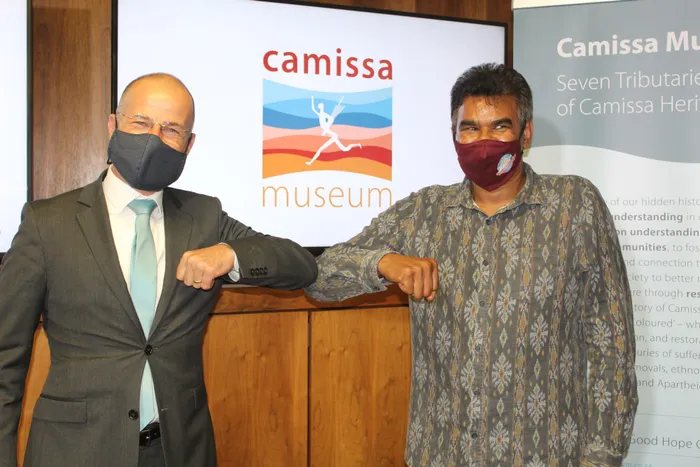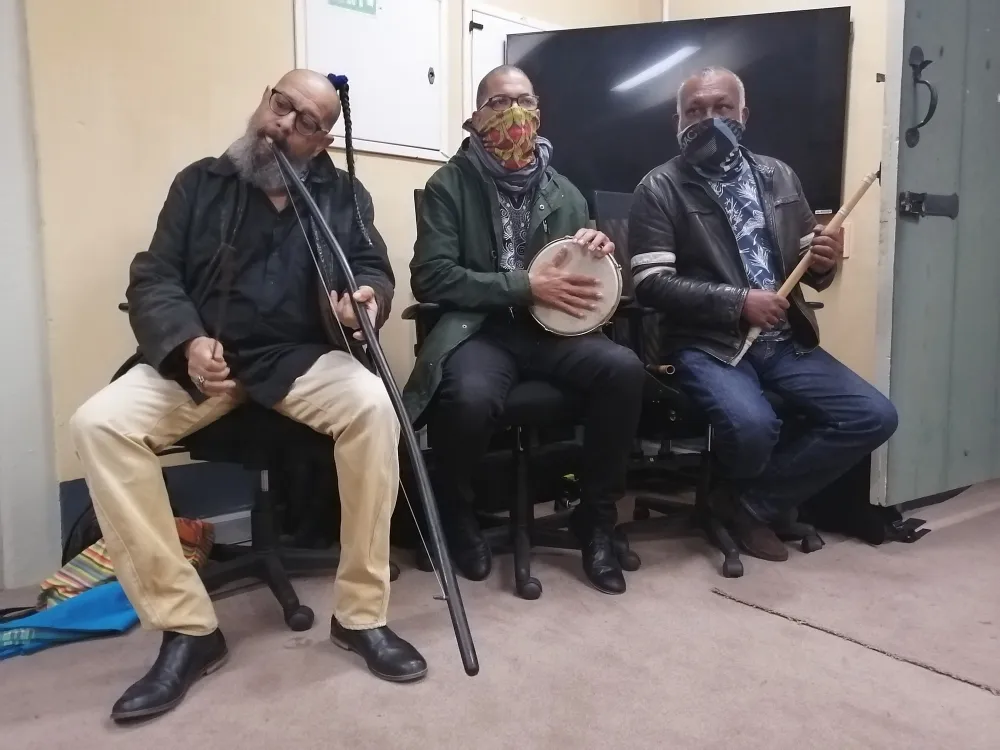Camissa Museum tells stories of the Cape

The Netherlands Consul-General, Sebastian Messerschmidt with the CEO of the Castle Control Board, Calvyn Gilfellan at the launch of the Camissa Museum
The first phase of the Camissa Museum, an online platform aiming to tell stories about people from the Cape, was launched yesterday, Thursday April 22, at the Castle of Good Hope.
The Castle also celebrated the opening of the Centre for Restorative Memory, where the physical museum will be housed.
The inspiration for the Camissa Museum was born out of a dream of the late anti-apartheid activist Reginald September, and also from the work of former political prisoner Dr Neville Alexander, who spoke of rivers and ever-changing tributaries and streams as an analogy for understanding identities.
The Camissa Museum, named after the river which runs under Cape Town, tells the stories of the peopling of the Cape.
Curator Angus Leendertz said the museum reveals the rich and complex history of Camissa Africans, particularly those classified as “coloured”, who have been portrayed by others for centuries but never by themselves.
“This history and these stories that have been buried and hidden for centuries are now fully told for the first time.”
Board member and historian Patric Tariq Mellet, said the idea for the museum went back 28 years, when he returned from exile in London during apartheid, and started engaging in conversations with the late Mr September about the identities of coloured communities.
Mr September formed the Roots and Visions Forum, aimed to bring coloured people together, and established a steering committee into which he drew several people that he had been working with for a few decades, including Mr Mellet.
Mr Mellet said they held seminars, meetings and intense debates around the question...“who are we?”
“We decided that we should document the information and create a space of memory, where our children can learn our stories.”
It was out of this process that the project of building a place of memory and understanding in the form of a museum on the history and heritage of Africans with a Camissa heritage was born, and the Castle of Good Hope identified as where it should be based.
Mr Mellet said the concept of the Camissa was that the project team wanted to incorporate the fact that “coloured” people were African people with many attributing adversities.
“The Camissa River has many combined sources, running from Table Mountain, under the city and into the sea.
“This was a powerful analogy, as the river has been driven underground, just like our stories.”
At the launch event, South African ambassador for Benin, Ruby Marks, said the museum, which she called a legacy project, acknowledged indigenous people and their parts in history, often told by others, and not themselves.
She said the museum tells of the ties that bind people together - “the umbilical cord of our identities that binds us together”.

“The Camissa Museum is a critique of the continued use of the term ‘coloured’ and supports a moving away from this relic of colonial and apartheid social engineering in favour of the embracing of our African identities, be they San, Khoe, Korana, Nama, Griqua and Camissa African,” said Ms Marks.
The first phase of the project was funded by the Netherlands, which contributed 20 000 euros to the introduction of the museum.
Consul-General, Sebastian Messerschmidt, said Cape Town shares a long, deep history with the Dutch.
He said while the Netherlands was active in the fight against apartheid, they were also part of a painful history, that started when the VOC landed in the Cape.
He said the museum was well placed at the Castle of Good Hope, which was not only the oldest building in the Cape, but the connection between so many countries and the city.
“This project will appeal to people who call the Cape home, but there are hopes that it will educate the Dutch on their role in a painful past, that was largely untold up to now.”

The Minister for Defence and Military Veterans, Nosiviwe Noluthando Mapisa-Nqakula, who also attended the event, said she was glad there was a place that our future generations can go to learn who we are.
“Camissa is why Cape Town is built where it is, and how apt to have opened the museum at the heart of this building.
“The museum is perfectly located for this growing conversation and connecting people to a place. We believe that people who know their history, can better map their futures.”
Calvyn Gilfellan, CEO of the Castle Control Board, said: “This monumental heritage intervention is central to and a continuation of the Castle Control Board and government’s drive to transform the image of this erstwhile symbol of armed colonial-apartheid conquest into a space of reflection, healing and eventually, reconciliation.
“The making, unmaking, and remaking of history is a calling all citizens should embrace; hence this significant project.”
Former Constitutional Court Judge Albie Sachs also sent a message of support to the museum, saying that Mr September was concerned about the importance of the past that was his origins.
“At last - finally, a museum that recognises the people of our communities, and a space that they can tell their stories in a dignified and honourable manner.”
The Camissa Museum online is available at ww.camissamuseum.co.za and a mini exhibition stands as the place holder for the physical museum that will be established in stages over the next year at the Castle’s Centre for Restorative Memory.